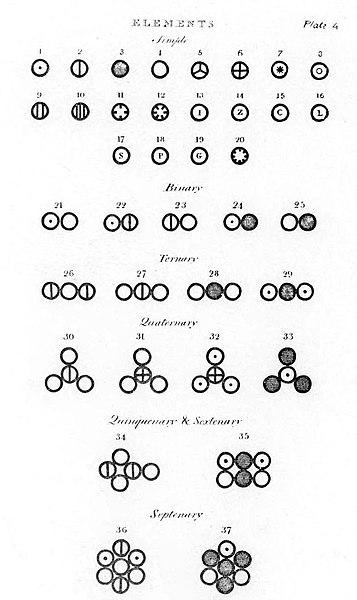Event JSON
{
"id": "1075b44473013392b45876e70f0ee9dfb15ee86c1c2593175c1da7196943ef27",
"pubkey": "894dfb8e81fbea70ef2ce2a2cc306069ff39e80b2881775df3dbe035359080c2",
"created_at": 1725625293,
"kind": 1,
"tags": [
[
"t",
"books"
],
[
"t",
"science"
],
[
"t",
"otd"
],
[
"t",
"chemistry"
],
[
"imeta",
"url https://files.mastodon.social/media_attachments/files/113/090/571/289/181/842/original/dd6d72aa2cd38651.jpg",
"m image/jpeg"
],
[
"proxy",
"https://mastodon.social/@gutenberg_org/113090579246631806",
"web"
],
[
"proxy",
"https://mastodon.social/users/gutenberg_org/statuses/113090579246631806",
"activitypub"
],
[
"L",
"pink.momostr"
],
[
"l",
"pink.momostr.activitypub:https://mastodon.social/users/gutenberg_org/statuses/113090579246631806",
"pink.momostr"
],
[
"-"
]
],
"content": "#OTD in 1803.\n\nBritish scientist John Dalton begins using symbols to represent the atoms of different elements.\n\nIn his laboratory notebook there is a list in which he set out the relative weights of the atoms of a number of elements, derived from analysis of water, ammonia, carbon dioxide, etc. by chemists of the time.\n\nhttps://en.wikipedia.org/wiki/John_Dalton#Atomic_theory\n\nBooks about John Dalton at PG:\nhttps://www.gutenberg.org/ebooks/56648\n\n#books #science #chemistry\nhttps://files.mastodon.social/media_attachments/files/113/090/571/289/181/842/original/dd6d72aa2cd38651.jpg\n",
"sig": "76cbdc9ac67a916ad24ae28e85badcf2fa9628832a96089d52f797bcb550b0436f797953a62d60888e52a921141b9c57e2278fb831924061dd360248a08c552e"
}
